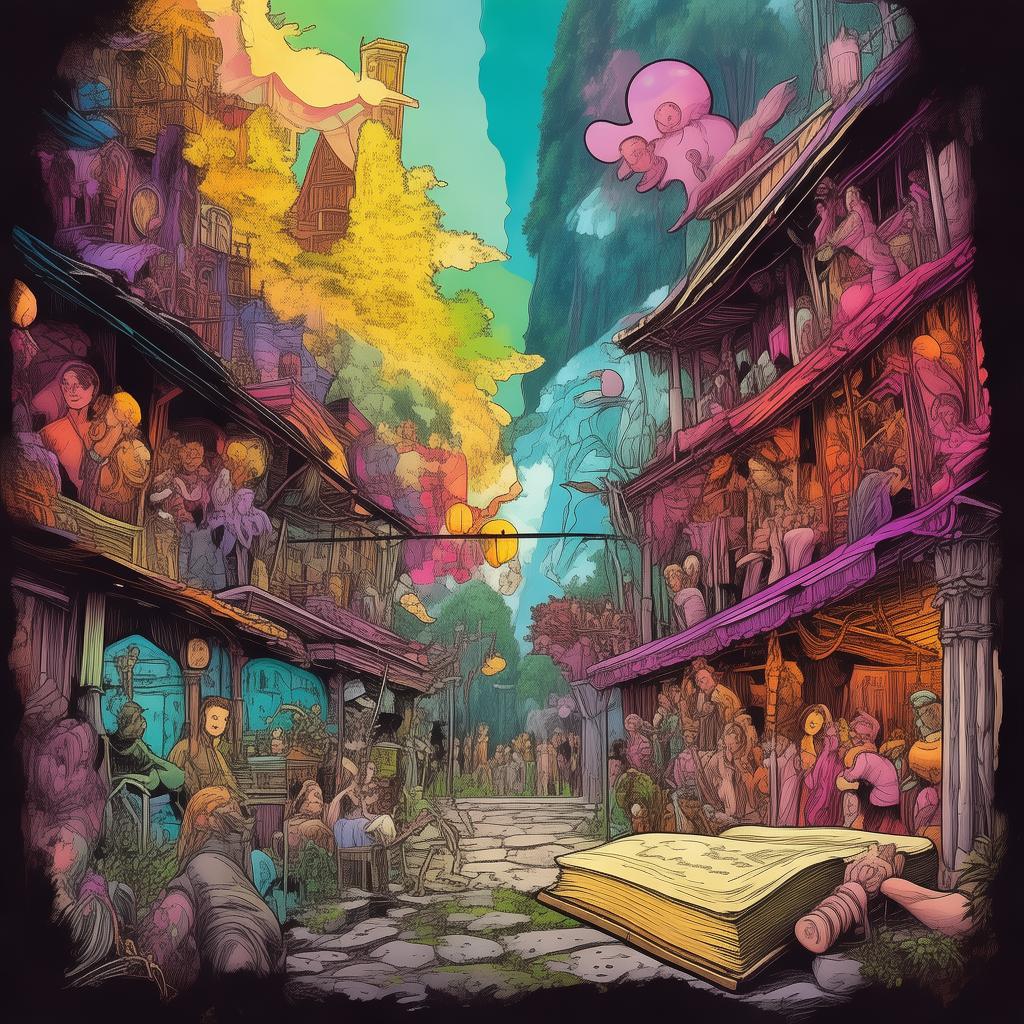The Samurai's Tale: A Journey of Self-Discovery
In the heart of ancient Japan, where the sun dipped below the horizon, casting a golden glow over the cherry blossoms, there stood a solitary figure. His name was Kaito, a samurai whose life was a tapestry of honor, duty, and the relentless pursuit of his samurai code. Yet, beneath the mask of his samurai armor, there simmered a storm of doubt and confusion.
Kaito had been raised in the prestigious House of Kurogane, where the samurai were revered and their word was law. From a young age, he had been taught the ways of the sword, the art of strategy, and the unwavering commitment to one's lord and country. But as he grew older, he found himself haunted by a question that gnawed at his soul: was he truly living according to his own will, or was he merely a pawn in a game played by others?
The seeds of his discontent were sown when Kaito's closest friend, a fellow samurai named Takumi, was mysteriously killed. The House of Kurogane was quick to dismiss the incident as an unfortunate accident, but Kaito's instincts told him otherwise. He began to suspect that Takumi's death was no accident, and that there was a conspiracy at play within the very walls of the house he called home.
Determined to uncover the truth, Kaito embarked on a perilous journey that would take him from the serene temples of Kyoto to the rugged mountains of the north. Along the way, he encountered a cast of characters who would challenge his beliefs and force him to question everything he thought he knew about himself and the world around him.
One such character was a mysterious woman named Yumi, who claimed to be a seer. She told Kaito that his destiny was intertwined with the fate of the House of Kurogane, and that he was destined to become a great leader, one who would bring balance to the world. But Kaito was skeptical. He had seen the ravages of war and the suffering it brought, and he was not sure that he wanted to be the one to wield such power.
As Kaito delved deeper into his quest, he discovered that Takumi's death was no mere accident. It was part of a larger plot to bring down the House of Kurogane and its leader, Lord Kurogane. The mastermind behind the conspiracy was none other than Kaito's own uncle, who sought to seize power for himself.
The revelation was a bombshell that shattered Kaito's world. He found himself at a crossroads, torn between his loyalty to the House of Kurogane and his newfound understanding of the corruption that lay within its walls. In a moment of intense conflict, Kaito had to make a choice that would define his future.
With the weight of the world on his shoulders, Kaito confronted his uncle in a climactic battle. The air was thick with tension as the two samurai clashed, their swords clashing with a sound that echoed through the mountains. It was a battle that would test not only their martial prowess but also their resolve and their very souls.
In the end, Kaito emerged victorious, but at a great cost. His uncle was defeated, but not before revealing a shocking truth: Kaito's real father was not Lord Kurogane, but a lowly farmer who had abandoned him as a child. The revelation shattered Kaito's sense of identity and purpose, leaving him adrift in a sea of confusion.
It was in this moment of despair that Yumi, the seer, appeared once more. She told Kaito that he was destined to become a leader, not of the House of Kurogane, but of the people. She encouraged him to embrace his past and to use his experiences to forge a new path for himself and for those who followed him.

With a newfound sense of purpose, Kaito returned to the House of Kurogane, not as a samurai bound by duty, but as a leader guided by his own convictions. He began to reform the House, introducing transparency and justice where there had been corruption. His actions sparked a movement, and soon, the House of Kurogane was no longer just a name, but a symbol of hope and change.
The story of Kaito's journey of self-discovery became a legend, one that would be told for generations. It was a tale of a samurai who had learned that true honor lay not in the sword or the code, but in the courage to face one's inner demons and to forge a path based on one's own truth.
In the end, Kaito's journey was not just about finding his place in the world, but about discovering the essence of what it meant to be a samurai. It was a story that would resonate with anyone who had ever sought to understand themselves and their place in the world, a story that would inspire and challenge, a story that would live on forever.
✨ Original Statement ✨
All articles published on this website (including but not limited to text, images, videos, and other content) are original or authorized for reposting and are protected by relevant laws. Without the explicit written permission of this website, no individual or organization may copy, modify, repost, or use the content for commercial purposes.
If you need to quote or cooperate, please contact this site for authorization. We reserve the right to pursue legal responsibility for any unauthorized use.
Hereby declared.









